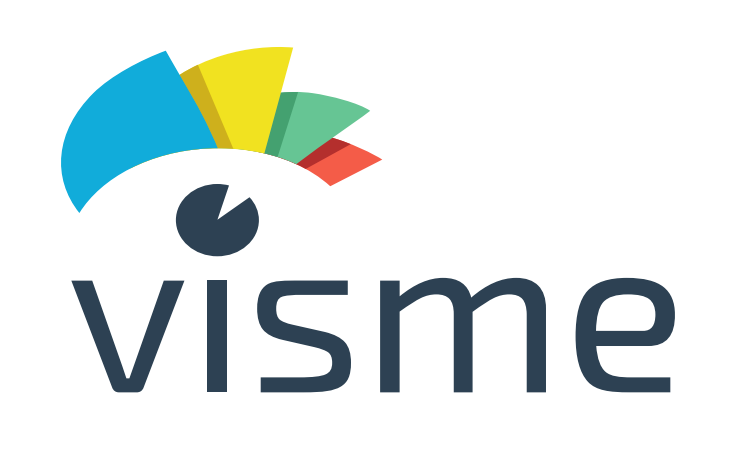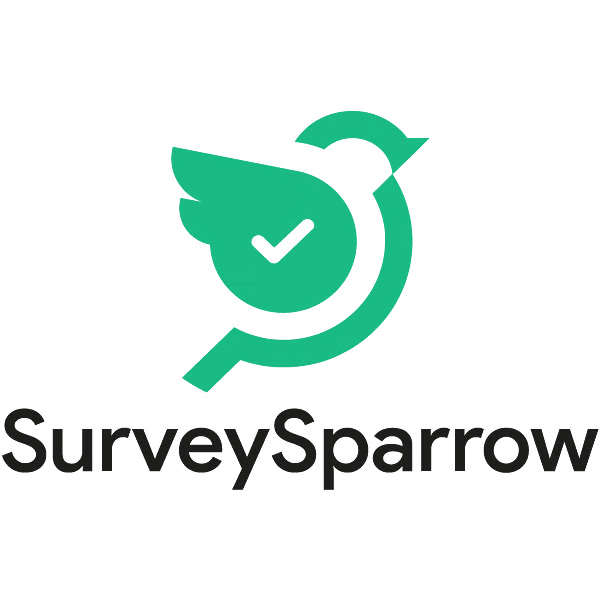Discover the secrets to boosting your teacher's salary to six figures with a powerful side gig. Unleash your earning potential and transform your financial future today!

Starting a side gig as a teacher that eventually turns into a full-time venture can be rewarding. Begin by first identifying your passion and skills to determine which side gig you’d like to explore. Consider what skills or hobbies you have that could be turned into a side gig. This could be related to teaching or completely unrelated. There certainly are no boundaries or limitations, as your knowledge and skills are extensive. Ultimately, the specific skills that will be most valuable for a teacher’s side gig depend on their interests and the nature of the venture they pursue. Teachers should leverage their existing skills and seek opportunities to develop new ones to excel in their chosen side gig.
Earning a six-figure income from a side gig that started as a part-time endeavor is a significant accomplishment. It requires dedication, strategic planning, and a clear path to scaling your side gig into a full-fledged business. Once, you’ve chosen your side gig, assess the current status of your side gig. What is it, and how profitable is it? Identify its strengths and areas that need improvement. Determine your target income level and set clear financial goals. Knowing your income target will help you stay motivated and focused. Be adaptable and open to change. Embrace new technologies and trends that can enhance your side gig’s offerings and reach. Building a six-figure income from a side gig takes time and persistence. Stay committed, even during challenging periods.
1. Online Course Creation
With expertise in curriculum development, teachers can create and sell online courses on platforms like Udemy, Teachable, or Coursera. Teachers are adept at planning lessons, managing schedules, and staying organized, which is crucial for running any business efficiently. Patience is valuable when dealing with customers or clients who may have questions or need assistance. Teachers regularly find creative solutions to address challenges in the classroom. This problem-solving ability can be applied to various aspects of running a side gig or business. Many teachers have experience in designing educational materials and curricula, which can be applied to creating and selling educational resources or courses. Curriculum development can be a lucrative and rewarding side gig for educators, instructional designers, and subject matter experts. Identify your subject area of expertise and the grade level or target audience you want to create curriculum for. Consider what unique knowledge or skills you can offer. Research the demand for curriculum materials in your chosen niche. Look for gaps in existing resources or areas where improvement is needed. Develop a few sample curriculum units or lesson plans that showcase your skills and style. These will serve as your portfolio when pitching to potential clients or customers. Decide whether you want to create physical materials, digital resources, or a combination of both. Consider the delivery platforms and tools you’ll use. Consider listing your curriculum materials on educational marketplaces like Teachers Pay Teachers, TES, or Amazon. These platforms can help you reach a broader audience. Teachable, Udemy, and Kojabi are platforms where you can teach courses to a more professional audience.
2. Content Creation
Teachers can write educational blog posts, create YouTube videos, or develop educational materials to sell on platforms like Teachers Pay Teachers. Teachers are skilled at researching and gathering information, which can be beneficial when creating content or providing specialized services. As technology becomes increasingly integrated into education, many teachers have become tech-savvy, which is advantageous for online businesses or content creation. Teachers excel in conveying complex ideas in a clear and understandable manner, a skill that is essential in many side gigs, such as tutoring, coaching, and content creation. Teachers frequently adapt to different learning styles and abilities among their students. This adaptability can be beneficial when dealing with diverse clients or customers. Content creation encompasses a wide range of formats and mediums, each catering to different audiences and purposes. These are some of those formats and mediums. Blogs are written articles on various topics, often published on websites or platforms. Articles that are longer, more in-depth pieces of writing are typically found in magazines, newspapers, or online publications. Ebooks are longer, downloadable written materials that are often used for educational or informational purposes. Whitepapers are in-depth research reports or guides, often used for B2B marketing or as educational resources. Video content such as videos hosted on YouTube, covers a wide range of topics and genres. Vlogs are video blogs where creators share their daily life, experiences, or opinions. Podcasts are audio recordings, often in a series, discussing various topics or hosting interviews.
3. Content Creation
Teachers often have strong language and grammar skills, making them excellent candidates for proofreading and editing services. Proofreading and editing jobs involve reviewing written content to ensure it is free of errors, clear, and consistent in terms of grammar, punctuation, spelling, style, and formatting. Proofreaders and editors can work in various settings, including publishing companies, marketing agencies, academic institutions, freelance positions, and online platforms. The specific tasks and responsibilities may vary depending on the nature of the content, the client’s requirements, and the industry in which they work. Attention to detail, a strong command of language and grammar, and the ability to work independently are essential qualities for success in proofreading and editing roles. Proofreading and editing can be a lucrative freelance career, and many businesses and individuals seek skilled professionals to help improve the quality of their written content. Ensure you have a strong command of grammar, punctuation, spelling, and style. Create a portfolio that showcases your editing and proofreading work. Include before-and-after samples to demonstrate the improvements you’ve made. Decide on the type of content you want to specialize in. Options include academic papers, business documents, marketing materials, novels, or technical writing. Utilize online platforms like LinkedIn, freelance marketplaces (e.g., Upwork, Fiverr), and social media to promote your editing and proofreading services. Consider offering related services, such as formatting, fact-checking, or writing content, to increase your value to clients. Position yourself as an expert by writing blog posts or ebooks about editing, proofreading tips, or writing improvement. Consider reaching out to businesses, publishers, authors, academics, and students who may need your services.

4. Freelance Writing
Teachers can use their writing skills to become freelance writers, contributing articles or blog posts to websites and publications. Earning a six-figure income from freelancing is achievable, but it requires dedication, strategic planning, and a commitment to delivering high-quality work. Choose a freelance niche where there is a high demand for your skills. Research industries, trends, and markets to find areas with ample opportunities. Create a portfolio showcasing your best work. Highlight your expertise and demonstrate the value you can bring to clients. Research market rates for your niche and set competitive yet realistic pricing. As you gain experience and build your reputation, you can gradually increase your rates. Build a personal brand that sets you apart from the competition. A professional website, a strong online presence, and a consistent brand image can help attract high-paying clients. Attend industry events, join relevant online communities, and network with potential clients and fellow freelancers. Utilize social media, content marketing, and email marketing to promote your services. Join freelance platforms like Upwork, Freelancer, Fiverr, or Toptal to find clients. These platforms can help you gain initial traction and build a client base. Offer a variety of services within your niche to cater to different client needs. Diversifying your skills can increase your earning potential. Once you’ve established a relationship with a client, look for opportunities to upsell additional services or cross-sell related offerings. Consider hiring additional freelancers or subcontractors to help you handle more work as your business grows. This can enable you to take on larger projects.
5. Graphic Design or Illustration
Teachers with design skills can create graphics, illustrations, or educational materials for clients. Graphic designers and illustrators are creative professionals who specialize in visual communication. While there is some overlap in their roles, they typically have distinct job responsibilities. Graphic designers use visual elements such as images, typography, and color to convey messages or information. They create designs that communicate a specific message or serve a particular purpose. Graphic designers often work closely with clients or creative directors to understand project goals and requirements. They may need to present design concepts and ideas to clients for approval. They develop visual identities for brands, including logos, business cards, letterheads, and other marketing collateral that maintain a consistent and recognizable look. Graphic designers arrange text and images in a visually pleasing and effective manner for various media, such as print materials, websites, social media, and advertisements. They create designs for both print (brochures, posters, magazines) and digital media (websites, social media graphics, email newsletters). Graphic designers are proficient in graphic design software such as Adobe Creative Cloud (e.g., Photoshop, Illustrator, InDesign) and other relevant tools. In some cases, graphic designers may incorporate illustrations into their design work, blurring the lines between the two roles. Both graphic designers and illustrators play essential roles in visual communication, using their creativity and skills to convey messages, tell stories, and create visually appealing content for various media and industries. Illustrators are primarily artists who create visual content, often in the form of drawings, paintings, or digital illustrations. They use their illustrations to tell stories, convey ideas, or evoke emotions. Illustrators may work on book illustrations, editorial illustrations, or visual narratives.
6. Photography
Teachers with photography skills can offer portrait photography services, especially for events like senior photos or family portraits. Transitioning from a side gig in photography to a six-figure income can be a challenging but rewarding journey. Continuously work on improving your photography skills. Take courses, attend workshops, and practice regularly to enhance your technical and artistic abilities. Develop a portfolio that showcases your best work and demonstrates your style and expertise. Quality is key, so only include your best photographs. Consider specializing in a specific photography niche that aligns with your passion and expertise. Examples include portrait, wedding, fashion, food, wildlife, landscape, or product photography. Invest in high-quality camera gear, lenses, and lighting equipment that suits your niche. Quality equipment can enhance your work and set you apart.

Create a professional website and use social media to showcase your portfolio and connect with potential clients. Optimize your website for search engines to improve your online visibility. Attend photography events, join photography groups, and network with other photographers, models, and professionals in your industry. Research the market rates for your niche and set competitive yet profitable pricing. Consider offering different packages to cater to a range of clients. Initially, take on a variety of projects to build a client base and gain experience. Encourage satisfied clients to refer you to others. Explore multiple sources of income related to photography, such as selling prints, teaching photography workshops, or licensing your images. The payment for photos used in magazines can vary widely depending on several factors, including the type of magazine, the purpose of the photo, the photographer’s experience and reputation, and the specific usage rights granted.
7. Fitness or Wellness Coaching
Teachers can become certified fitness instructors or wellness coaches to help clients lead healthier lives. Teachers understand the importance of empathy and building positive relationships with students and parents. This skill can be valuable in client interactions. Teachers are skilled at assessing student performance and providing constructive feedback. This can be valuable when offering coaching or consulting services. Reaching six figures as a fitness or wellness coach is achievable with dedication, strategic planning, and a commitment to helping your clients achieve their health and wellness goals. Identify a specific niche or target audience within the fitness and wellness industry. Focusing on a niche allows you to specialize and stand out. Continuously educate yourself and stay updated on the latest trends, research, and techniques in fitness and wellness. Attend workshops, conferences, and courses. Develop a Unique Selling Proposition. Define what sets you apart from other coaches. Your USP should highlight your unique approach, specialization, or coaching style. Develop a strong personal brand that reflects your coaching philosophy and values. Your brand should resonate with your target audience. Build a professional website that showcases your services, testimonials, and client success stories. Create valuable and informative content through blog posts, videos, podcasts, or social media. Share your knowledge to attract and engage your audience. Diversify your services to include one-on-one coaching, group coaching, online programs, workshops, and seminars. Different offerings can appeal to a broader range of clients.
8. Podcasting
Teachers can start a podcast on a topic they are passionate about and monetize it through ads, affiliate marketing, or sponsorships. Select a niche you are passionate about and have expertise in. It’s essential to have a niche that can attract a sizable audience. Record high-quality podcasts. Consistency is key; maintain a regular posting schedule to keep your audience engaged. Promote your content on social media, forums, and other relevant platforms. Interact with your audience and respond to comments and feedback.
While podcasting, become an Affiliate Marketer and you can promote relevant products or services and earn a commission on sales by posting those affiliate links in your Podcast Show Notes. Partner with companies for sponsored posts or podcast episodes. You can mention or recommend these products or services during your podcast show, thereby building a great partnership with that brand and helping your listeners at the same time.
Whatever side gig you choose, leverage your existing network, including colleagues, students’ parents, and educational contacts, to spread the word about your side gig. Attend relevant events and join online communities related to your niche. Continue learning and improving your skills in both your teaching job and your side gig. The more you can offer, the more valuable your services become. Balancing a side gig with a full-time teaching job can be challenging. Create a schedule that allows you to allocate time to both endeavors and be disciplined about sticking to it. As your side gig grows, save a portion of your earnings to serve as a financial cushion when you eventually decide to transition to it full-time. Regularly assess your side gig’s performance. Are you meeting your goals? Are there opportunities for expansion or improvement? Adjust your strategy accordingly. When your side gig generates a consistent income and you feel confident in its potential, consider transitioning to it full-time. Be sure to have a financial plan in place to support yourself during the transition. Remember that the transition from a side gig to a full-time business can take time, patience, and perseverance. It’s important to be prepared for challenges and setbacks along the way. However, with dedication and careful planning, it is possible to turn a side gig into a successful full-time endeavor.





























